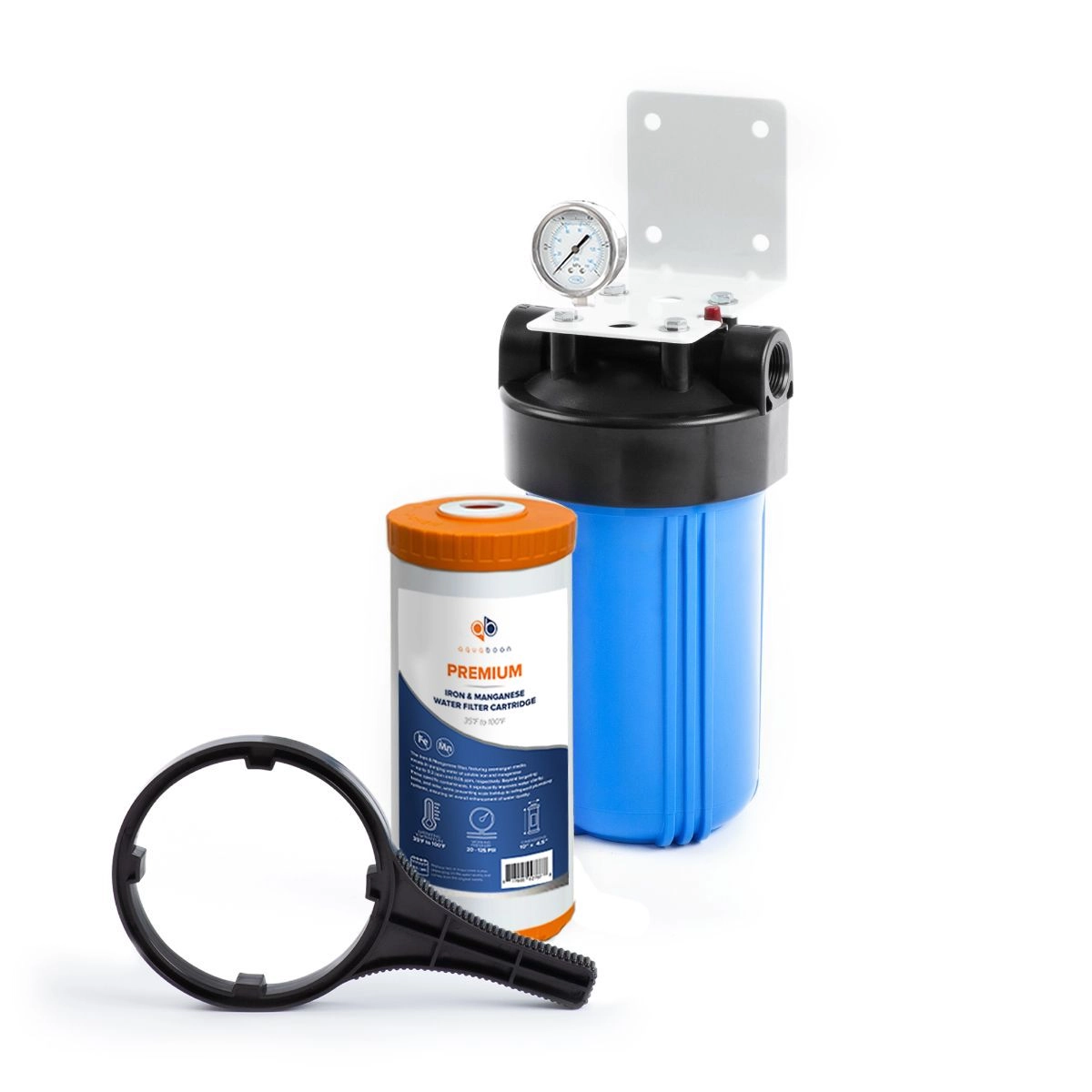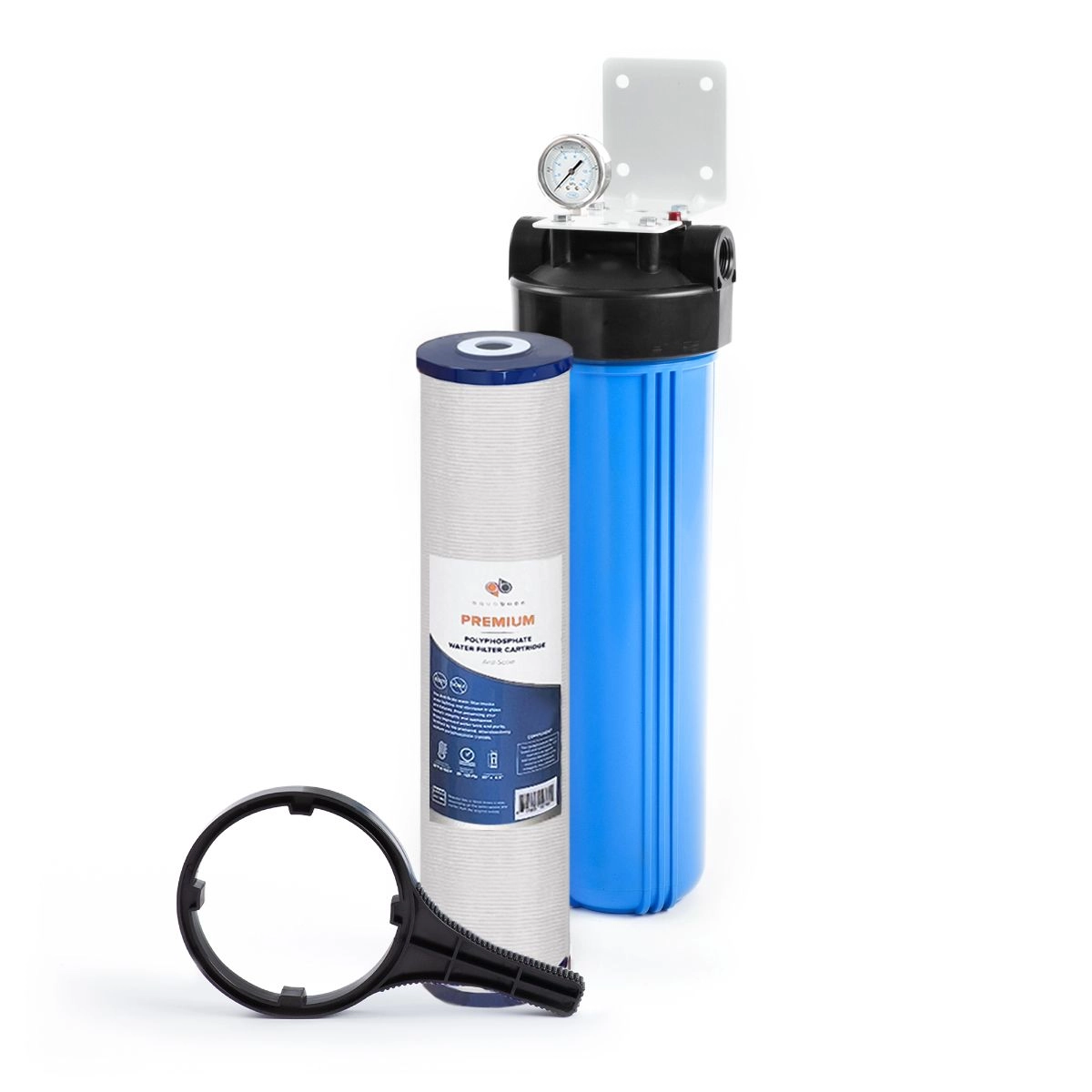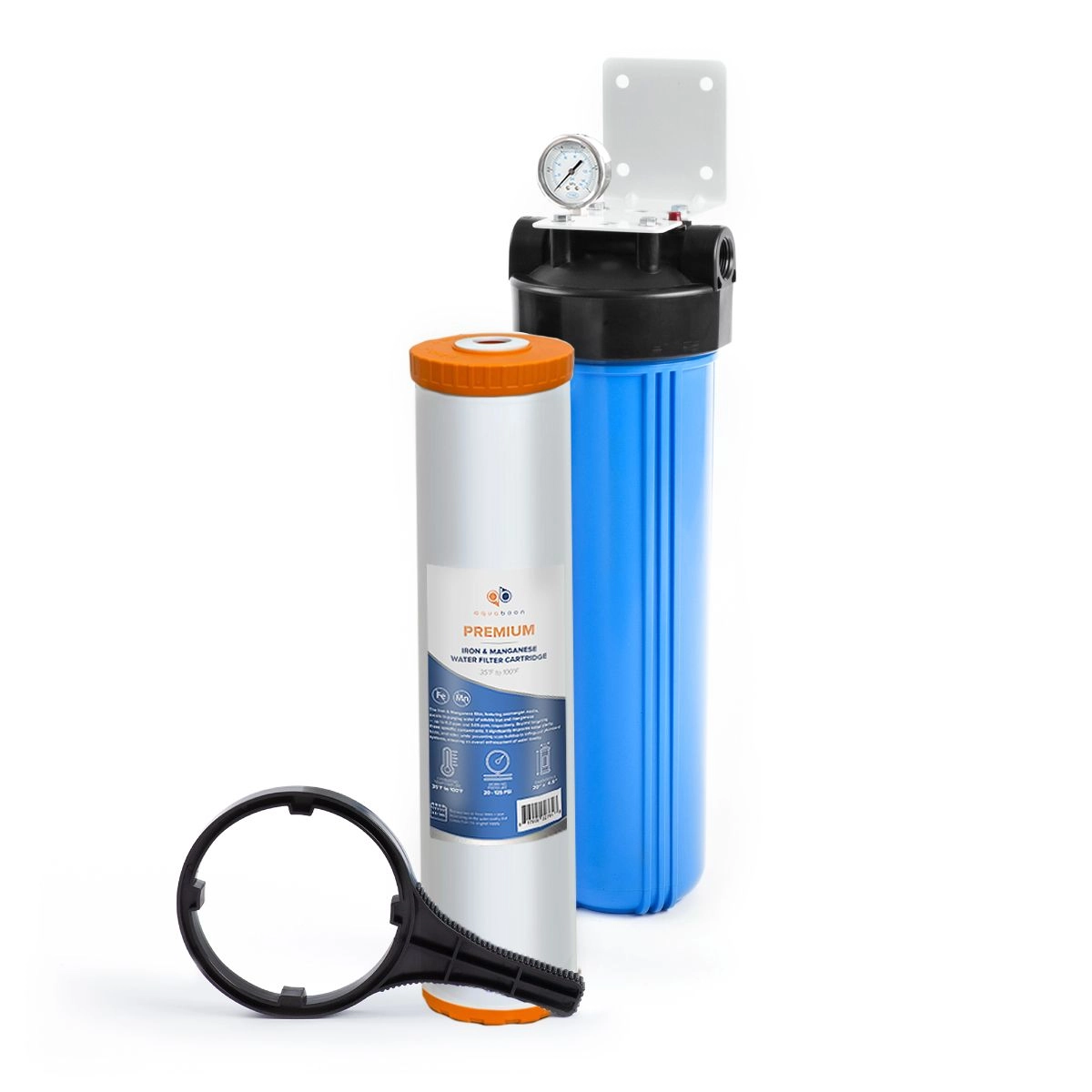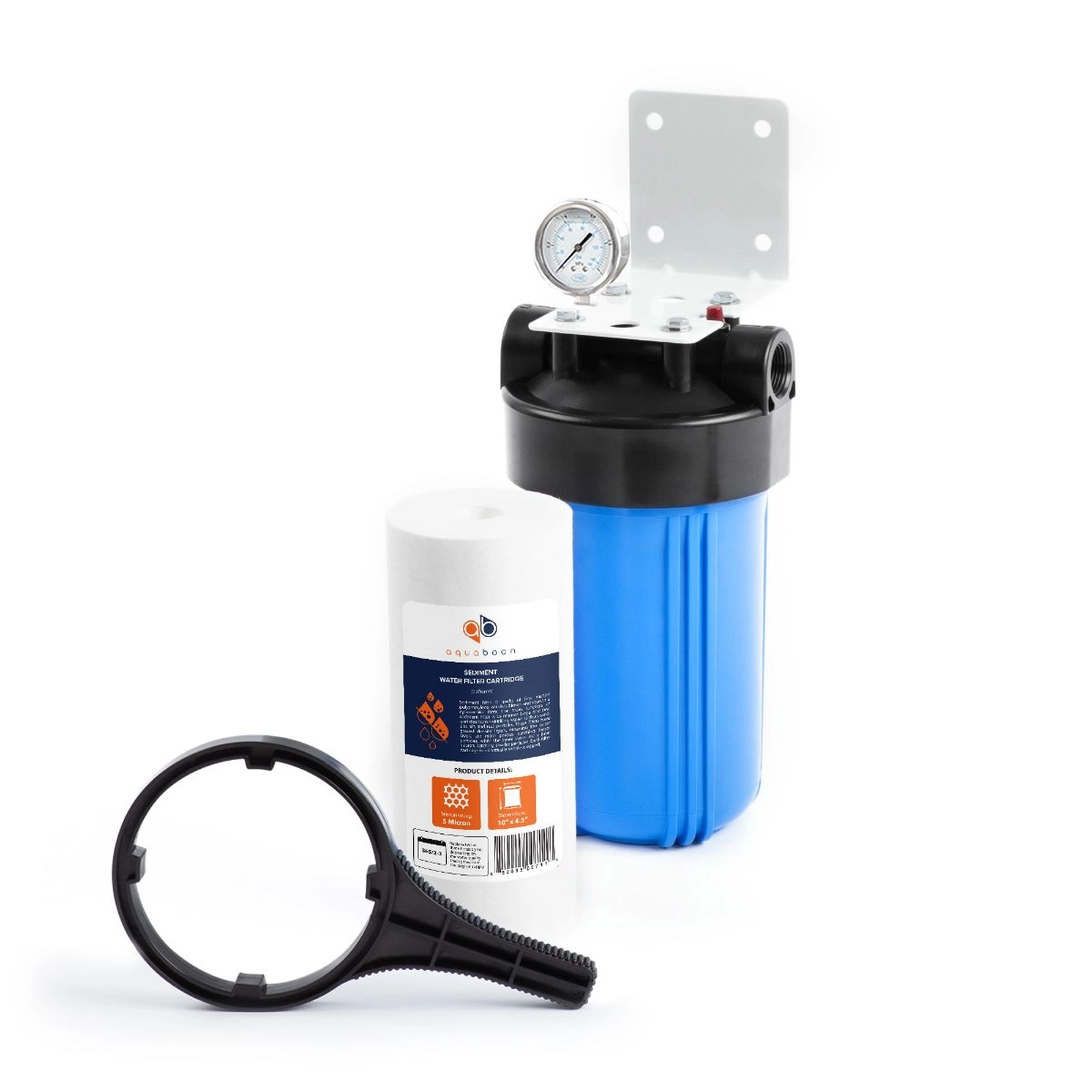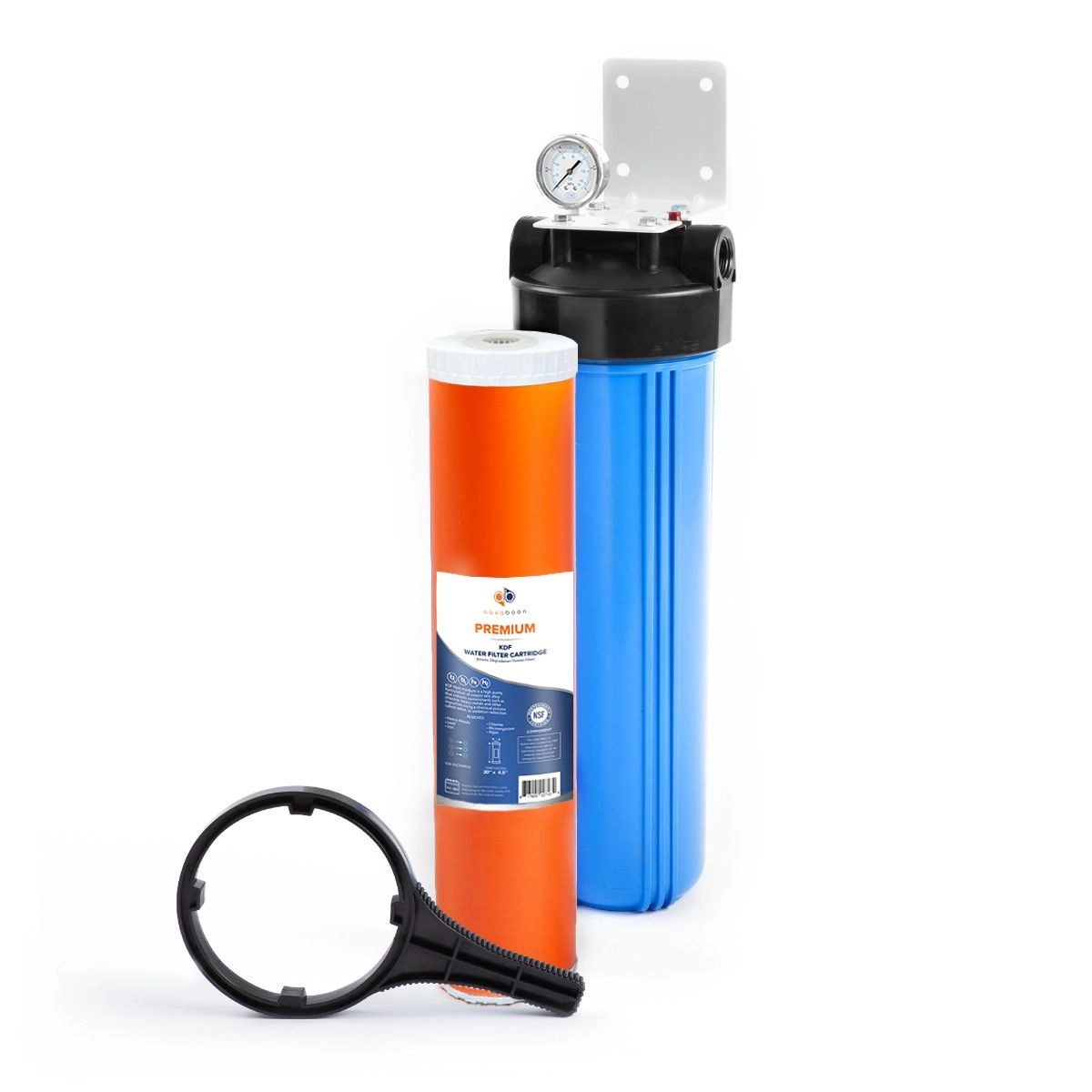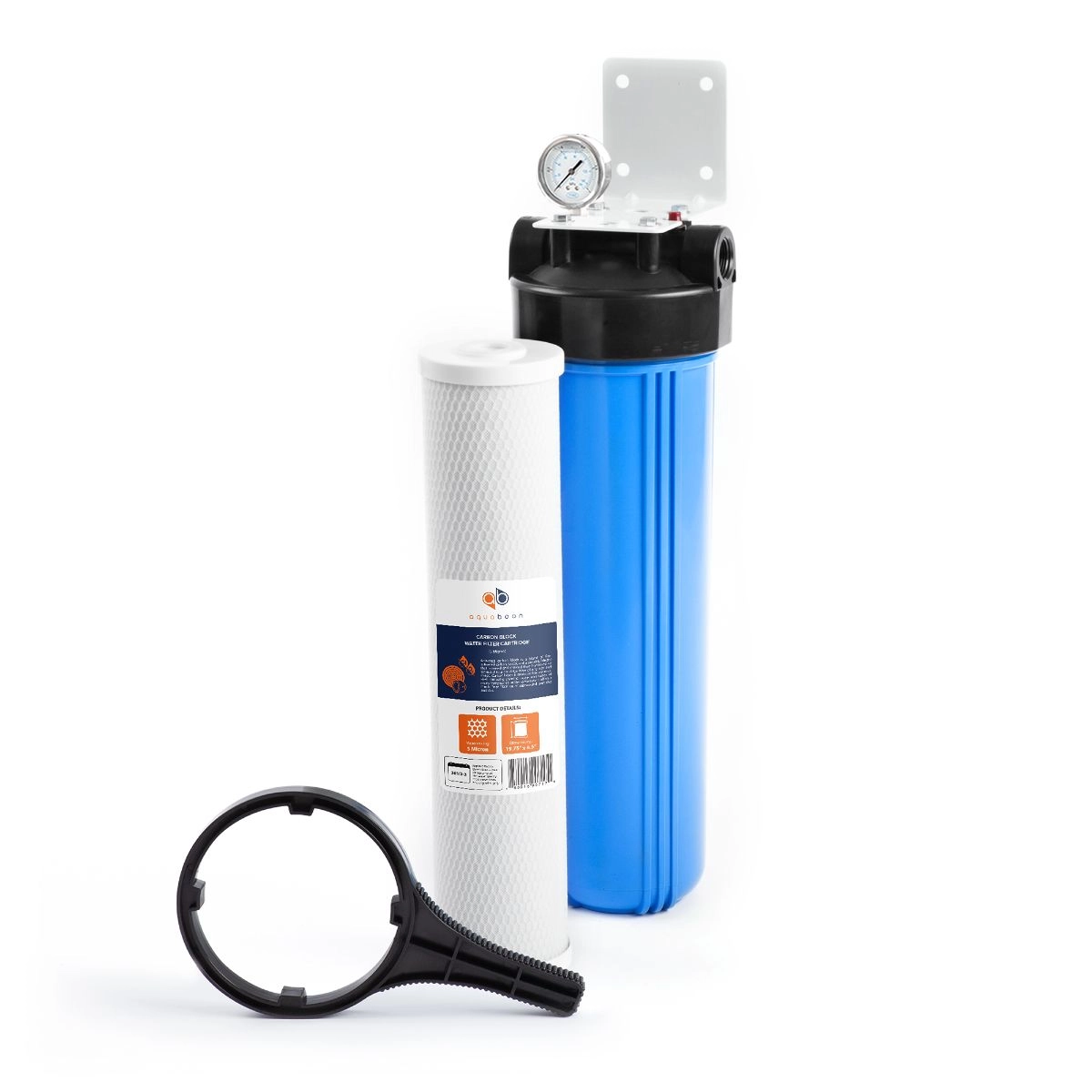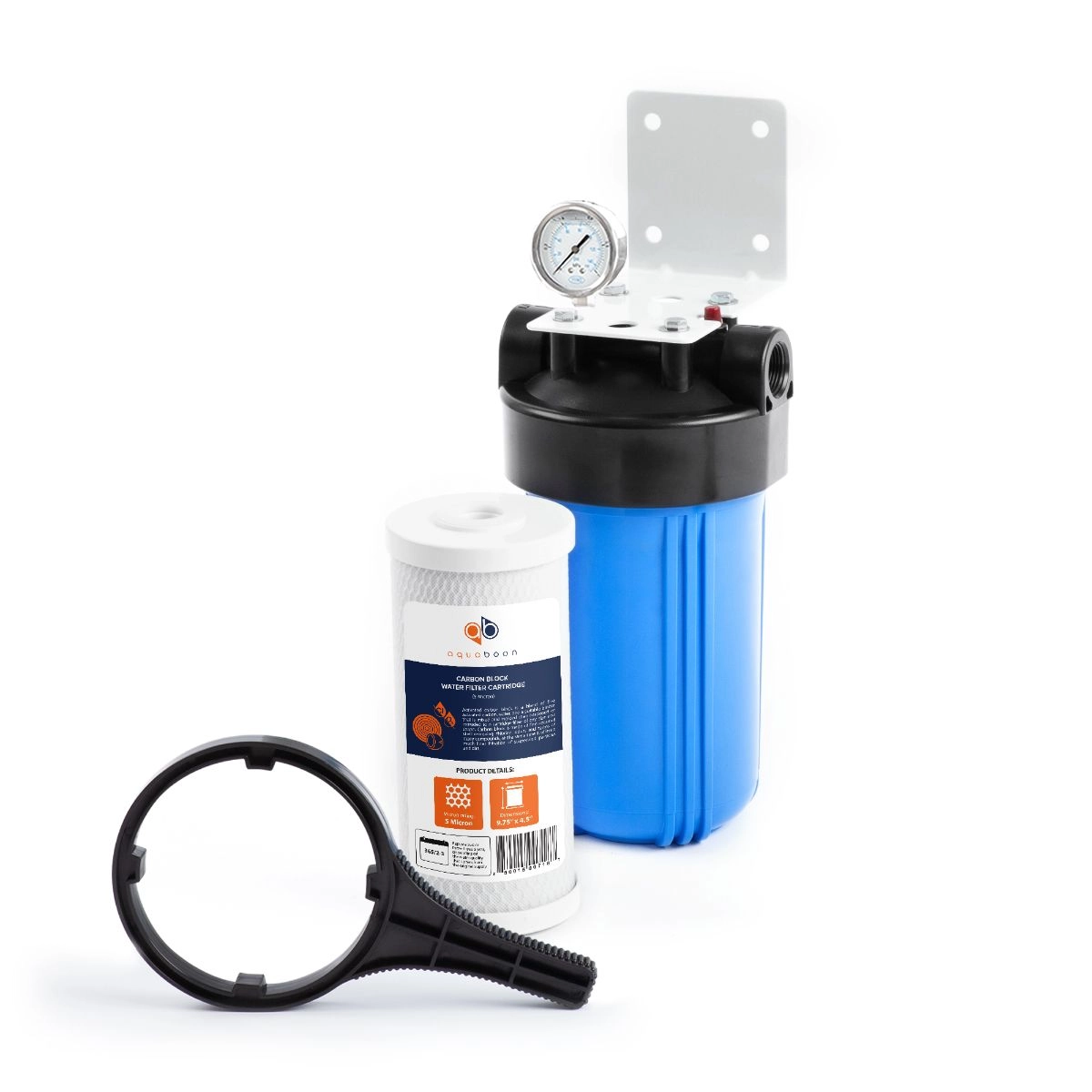We have come a long way since the days we used pieces of clothing and sponges to sieve out a handful of particles from water. Advancements in the filtration industry now present us with sophisticated water treatment solutions that promise to do away with a wide range of soluble and insoluble toxins.
Whether you want to make safe hydration an everyday reality or just want to improve water softness, there are numerous options to pick from, starting with pitchers to water filters for the whole house.
-
However, if you are just considering treatment options for the first time, choosing the right purification solution can be a bit overwhelming.
But Filterway has got you covered.
This best water filter guide will share everything you need to know about the different treatment solutions, the type of impurities they remove, and how to choose a guide water filter that is perfect for your home.
Let's dive into the details.
A list of tap water contaminants
As water flows into our homes, it comes into contact with various toxins that adversely affect its quality. Some of the most common contaminants that might flow into your cup include:
Industrial pollutants
Many factories use chemicals like metal dust and sulfur dioxide during production. When released into the air, sulfur dioxide can combine with moisture to create acid rain, which then pollutes rivers, lakes, and groundwater.
On top of that, poor waste management at industrial sites often leads to toxic residues seeping into soil and water sources. Over time, these pollutants mix with the water we use, making it unsafe to drink without proper filtration or treatment.
Car emissions
Did you know that car emissions not only pollute the air but also contaminate our rivers, streams, lakes, and oceans?
Cars emit carbon monoxide, nitrogen oxides, VOCs, and other greenhouse gases. When these harmful gases are released into the air, they fall back into the earth's surface, where they are washed into our lakes and oceans by rain, contaminating them.
Urban chemicals
Many cosmetics and personal care products — like shampoos, lotions, and makeup — contain chemicals such as dioxane, acrylates, and other harmful substances. When we wash them off, these chemicals enter the wastewater system and release nitrogen and phosphorus, two common pollutants that contaminate tap water.
Other everyday items, like flame retardants and medicines, can also introduce toxic compounds into the water supply. Because these urban pollutants often have complex chemical structures, they can be difficult to remove and may pose serious health risks if consumed. That’s why it’s important to use a high-quality water filtration system that can effectively remove such contaminants and keep your household water clean and safe.
Water treatment chemicals
Water treatment plants add chlorine to public water supplies to kill bacteria and algae, including harmful types like Salmonella. This process helps make the water safe to drink.
However, for some people, chlorinated water can cause side effects such as nausea or stomach discomfort. Others simply dislike its strong taste and smell. If you notice these issues, using a water filter that removes chlorine is a simple and effective way to improve the quality, taste, and safety of your drinking water.
Agricultural Products
Pesticides and herbicides used in agricultural work can poison our drinking water in many ways.
During heavy rainfall, for instance, agricultural chemicals will be washed down to the stream and rivers, while some will dissolve and percolate downwards through the soil until it seeps into groundwater sources.
Besides, the wastewater that we dispose of after cleaning spraying equipment can easily pollute H2O systems.
EPA standards for water quality
EPA (Environmental Protection Agency) standards set the rules for how clean and safe drinking water should be. They define what levels of different substances are acceptable and help ensure that public water systems meet these safety limits. However, not all contaminants are covered by these regulations, and the standards apply mainly to municipal water supplies — not private wells.
Since well water often contains more impurities and isn’t regularly tested by authorities, using a water filter is the best way to protect your family. A good filtration system ensures that the water coming from your faucet is clean, safe, and free from harmful substances.
What could be wrong with the water in your home?
Your household might be filling its cups with impure water. But how come?
Toxins can be between the treatment plant and your sink
Treatment plants take the necessary actions to remove unwanted substances that diminish the quality of your drinking water. However, when it is released from the plant on its way into your home, it may dissolve contaminants and debris that have settled in the pipes.
Some of the most common impurities that may be found in piping systems include rust, copper, and mold. If there are leaks, contaminants from the outside surfaces can be sucked into the pipes and into your taps.
Fluoride levels may surpass recommended levels
Research has shown that groundwater naturally contains a significant amount of fluoride. Considering the mineral’s immense dental benefits, treatment plants would add more in case a drop in fluoride levels was confirmed.
However, if fluoride concentrations are abnormally high, it poses a health risk. It leaves people susceptible to dental and skeletal fluorosis, as well as other health issues, which is a good enough reason to get rid of the excess.
The taste and smell might be unpleasant
The law requires treatment plants to use disinfectants such as chlorine in the decontamination process. However, these chemical treatments often leave an aftertaste that many find unpleasant.
Furthermore, you may notice that the H2O from your taps has a pungent smell. This indicates the presence of microorganisms, gases, and other impurities, making it unsafe for human consumption.
Regulatory failure at the water department
We can never be sure if the water department is keen on following all policies put in place by the EPA and other regulatory bodies.
Even if they are cautious, mishaps do happen. And once in a while, they end up falling short of compliance requirements.
Basics of filter systems
Filtration systems are gadgets that you can use to stop these pollutants in H2O from making their way into your home. They will either do this by sieving the debris, trapping impurities, or neutralizing the chemicals.
This selection guide water filter digs deeper into these systems, helping you understand the home water filter types available in the market, their pros and cons, as well as which one is your home’s perfect fit.
Water purifier product types
Water purifiers come in different types, each designed to eliminate specific contaminants and improve water quality. Choosing the right system depends on your water source, its composition, and your household needs.
Main types of water purifiers:
- Reverse Osmosis (RO): Uses a semi-permeable membrane to remove dissolved salts, heavy metals, and harmful chemicals. Ideal for hard or highly contaminated water.
- Ultraviolet (UV): Destroys microorganisms such as bacteria and viruses using ultraviolet light, ensuring microbiological safety.
- Activated Carbon Filter: Removes chlorine, organic impurities, and bad odors, enhancing the taste and smell of water.
- Sediment Filter: Captures larger particles like sand, rust, and silt, protecting other filtration stages.
- Whole-house systems — connected to the main water supply to deliver purified water throughout the entire home. They use multiple cartridges and membranes, providing one of the most effective purification methods.
Modern water purifiers often combine these technologies in multi-stage systems, ensuring maximum protection and delivering fresh, clean, and safe water for everyday use.
How to determine filter effectiveness?
To know how well your water filter works, it’s important to understand NSF ratings — they show what each system has been tested and certified to remove. NSF sets safety and performance standards for all water purification products.
Here’s what the main ratings mean:
- NSF 42: Improves taste and smell by removing chlorine, chloramine, and similar chemicals.
- NSF 53: Targets harmful contaminants that can affect your health, such as lead or pesticides.
- NSF 44: Applies to water softeners that reduce hardness and scale buildup.
- NSF 58: Refers to reverse osmosis systems that filter out dissolved solids and heavy metals.
- NSF 401: Covers filters that remove new or “emerging” contaminants not yet regulated by the EPA (like pharmaceuticals).
Keep in mind that a filter with one of these ratings won’t remove everything — it’s certified only for what’s listed. Always check the product label or description to understand exactly what your filter can and can’t do.
What type of filter to pick?
If you are wondering, 'what kind of water filter do I need?' You have come to the right place.
This section provides a clear comparison of the main water filtration systems — outlining their strengths, limitations, and best use cases. You’ll learn which type removes specific contaminants most effectively, how often each one needs replacement, and which option offers the best balance between performance and cost. This will help you choose the ideal filter for your water quality and daily needs.
In-Refrigerator Filters
Some refrigerator models come with built-in dispensers connected directly to your water line. When you press the dispenser, water flows through a decontamination cartridge before reaching your cup. These filters use activated carbon to trap debris and neutralize certain unwanted contaminants. They’re easy to maintain, and replacing the cartridge doesn’t require professional help.
However, because the water and carbon interact only briefly, the purification process is less effective compared to more advanced systems. Such filters remove only a limited number of impurities and need to be replaced regularly, depending on how frequently your family uses the dispenser and the water’s contamination level.
Reverse Osmosis (RO)
Reverse Osmosis works by forcing concentrated liquids to flow toward less concentrated fluids.
In this case, when contaminated H2O goes into an RO system, it is forced to flow toward purified water. However, it will first pass through numerous treatment media, including a semi-permeable membrane, sediment, and carbon cartridges.
Reverse osmosis systems are among the most effective water treatment solutions, removing up to 99.9% of impurities and providing exceptionally clean drinking water. They are also environmentally friendly, offering a sustainable alternative to bottled water. However, these systems have a few drawbacks. The filtration process produces a considerable amount of wastewater due to backwashing, though it can be reused for irrigation or household chores.
Additionally, by removing essential minerals, RO systems can lower the water’s pH, making it slightly acidic. They also come at a higher cost and require regular maintenance to ensure consistent performance.
Whole house filter
This is a point-of-entry treatment solution that decontaminates every drop that flows into your home. It is installed at the home's main line to ensure all taps and showerheads deliver clean water.
A whole-house water filtration system delivers clean, contaminant-free water to every tap in your home. It effectively removes up to 99.9% of impurities, helping you enjoy healthier skin and hair while protecting your household appliances like showerheads, washing machines, and kettles from scale buildup. This system is also eco-friendly and capable of supporting high water flow rates — up to 15–40 gallons per minute — ensuring consistent performance even for large households. However, such systems require a significant initial investment and proper maintenance to keep them running efficiently over time.
How to Pick and Maintain the Best Water Filter
As you may have noticed by now, filtration systems are not complicated. As you strive to protect your family, we hope this water filter consumer guide water filters provides the crucial information you need to pick the right option for your home.
Do you still need additional information?
Filterway is here to help.
We are an online store selling a wide range of purification systems and replacement cartridges. We have garnered industry expertise over the years and can offer sound water filter recommendations depending on your purification needs.
Contact us today for more information.
How to Calculate the Home Water Flow Rate February 7, 2023Typical Residential Water Flow Rate November 10, 2022Best filters to remove chlorine December 9, 2022Understanding the Role of Water Pressure in Treatment Systems December 17, 2025How NSF Certifications Ensure Water Filter Safety and Performance December 4, 2025The Hidden Journey of Tap Water: From Source to Sink November 26, 2025TDS Explained: What It Means for Your Water November 20, 2025



